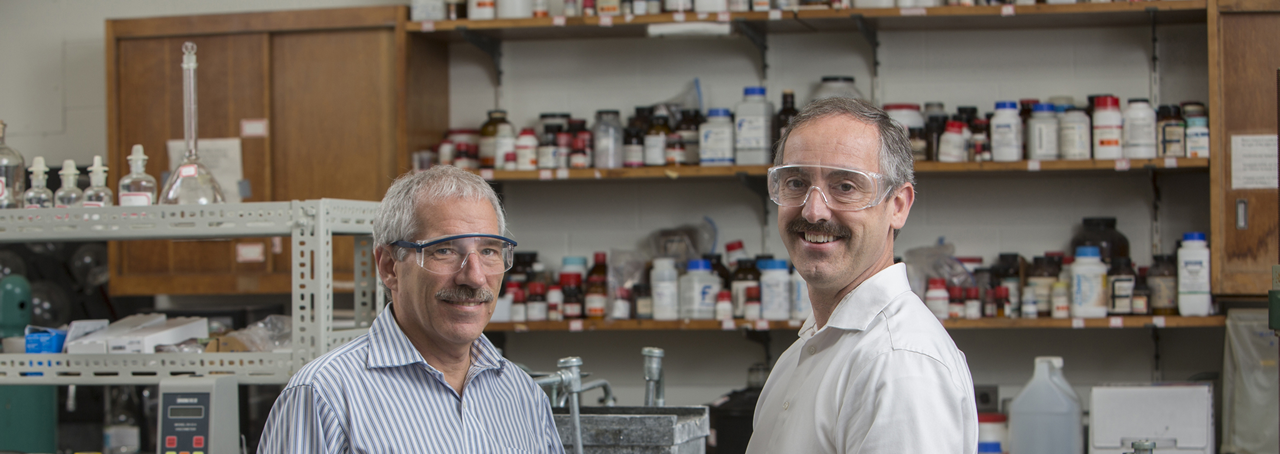Programs help propel three start-ups from lab to market
Three new firms with roots in SUNY research labs are off to a strong start, thanks in part to two business development programs—SUNY’s Technology Accelerator Fund (TAF) and START-UP NY.
TAF makes early-stage investments of up to $50,000 to help SUNY researchers transform their inventions into commercial products. START-UP NY allows qualified businesses to operate free of state and local taxes for ten years when they locate on or near participating academic campuses.
One company benefitting from both those programs is Theragnostic Technologies, Inc. Founded in 2012 by Balaji Sitharaman, associate professor of biomedical engineering at Stony Brook University, Theragnostic Technologies has developed a nanoparticle contrast agent, for use in magnetic resonance imaging (MRI) that is safer and more effective than the products in use today.
Sitharaman received a TAF investment in 2014. “We used the money to optimize the synthesis conditions, so we could scale up production, first to a 100-gram level, and then to kilogram quantities,” he says.
With that work underway, Sitharaman is now seeking potential investors. “We are also pursuing possible partnership opportunities,” he says.
Headquartered in the Long Island High Technology Incubator on the Stony Brook campus, Theragnostic Technologies joined START-UP NY in 2015. “The exemption from personal income taxes for ten years will help me recruit top talent,” Sitharaman says. And every dollar the company saves on other taxes can be reinvested into the technology.
Locating in the START-UP NY zone offers other benefits as well. “We have access to Stony Brook’s animal facility,” Sitharaman says. “We have used a number of tools available here to characterize the nanoparticles and perform some histological studies. And since we are close to the Center for Functional Nanomaterials at Brookhaven National Laboratory, we can avail ourselves of their resources as well.”
At Binghamton University’s Innovative Technology Center start-up ChromaNanoTech is also scaling up for commercial production. ChromaNanoTech uses nanomaterials to create inexpensive, heat-resistant dyes for use in various optical shielding applications. The patent-pending process for binding organic dyes to metal oxides was invented by Wayne Jones, professor of chemistry and chair of Binghamton’s chemistry department, in collaboration with Bill Bernier, a research professor of chemistry and material science and engineering, Ph.D. student Kenneth Skorenko, and industry collaborators. A 2014 TAF investment was instrumental in moving the invention through prototyping, scale-up and material qualification.
The research team decided to launch ChromaNanoTech to commercialize their invention after participating in a campus-sponsored Pre-Seed Workshop. The company was also accepted into the competitive Nexus-NY clean-energy proof-of-concept center, and undertook a rigorous customer discovery and product-market fit validation effort. ChromaNanoTech subsequently joined the Binghamton Start-Up Suite as a client company and became a member of the Southern Tier Hot Spot. On the horizon is a possible application to the START-UP NY program.
While ChromaNanoTech continues to develop the technology, the start-up is working hard to enter the market. “We started at the milligram level, and we’re targeted to grow it on an individual production line to a kilogram per week,” says William Bernier, the company’s CEO. Once the company hits the 1-kilogram mark, it can fill its first commercial order. The customer will use one of ChromaNanoTech’s dyes to make windows that block infrared light—and the heat it carries—while admitting visible light. “You can save up to 50 percent of your energy for air conditioning by using our technology,” Bernier says.
A third start-up, Glauconix, got its start in the laboratory of Susan Sharfstein, associate professor of nanobiosciences at SUNY Polytechnic Institute’s Colleges of Nanoscale Science and Engineering in Albany. Sharfstein received a TAF investment in 2014 for a process that creates a living duplicate of a filter in the eye, called the trabecular meshwork, which appears to be involved in the disease glaucoma. Researchers can use this filter to test possible glaucoma treatments.
Sharfstein and her lab used the TAF funding to develop a proof-of-concept and commercial prototype based on their innovation. During that same period, one of her graduate students, Karen Torrejon, joined with several other students to found Glauconix. The business will conduct research under contract to pharmaceutical and biomedical companies, starting with tests that employ the lab-grown trebacular meshwork.
The Glauconix team took the $100,000 grand prize in the New York Business Plan Competition in 2014 and has since gained further support, including a $225,000 grant from the National Science Foundation’s Small Business Technology Transfer program and $250,000 from the investment group Eastern New York Angels.
TAF was key to making those subsequent achievements possible, says Torrejon, now Glauconix’s CEO. “If the lab had not received that grant, I don’t think we would have formed the company.”
Glauconix has taken space on the SUNY Poly Albany site and applied to START-UP NY. The program’s tax exemptions are boon to a young company that’s hiring staff, ordering equipment and incurring other start-up costs, Torrejon says. “It will give us a competitive advantage against companies that are not located in New York.”
comments powered by Disqus


